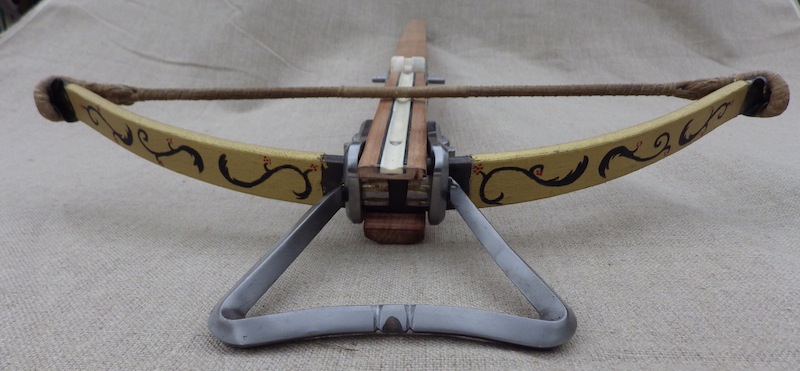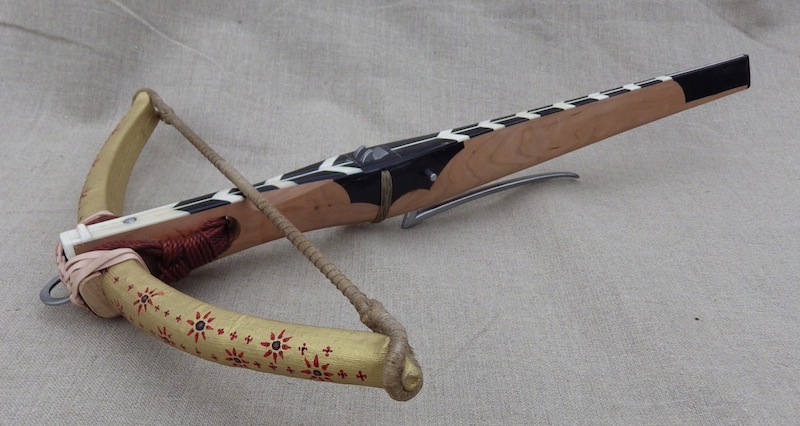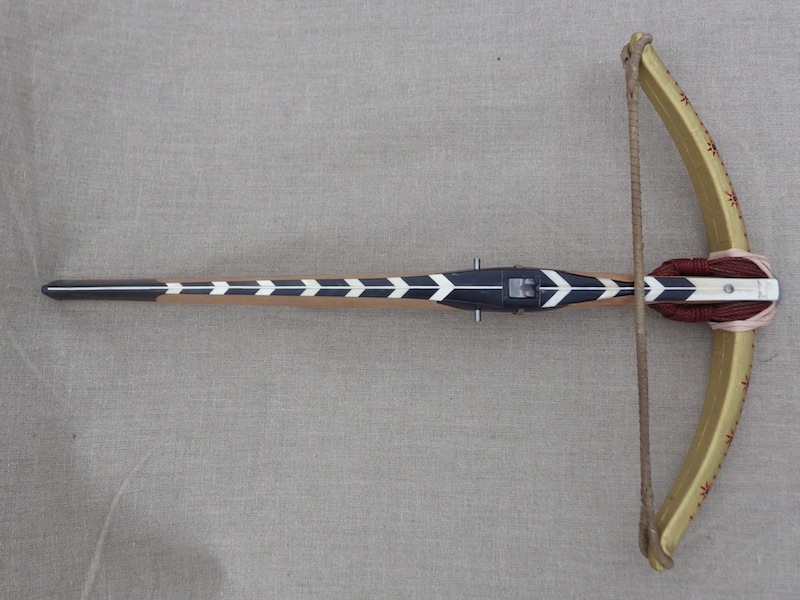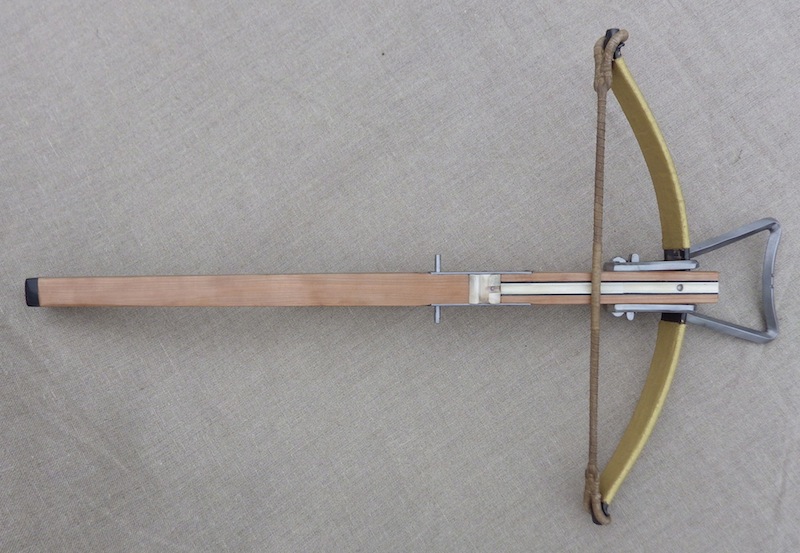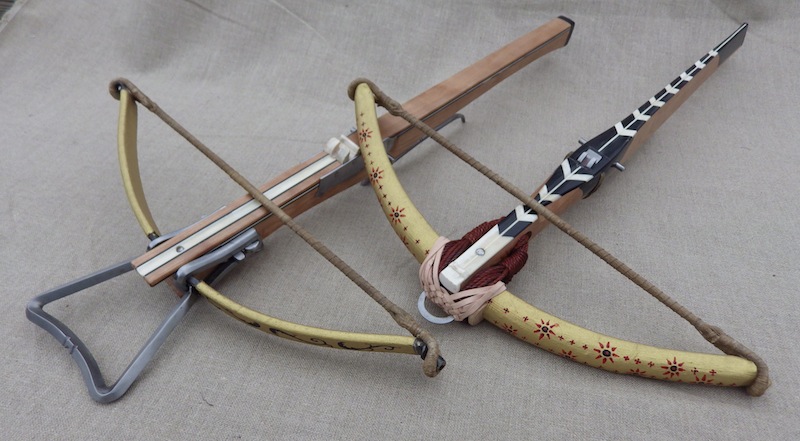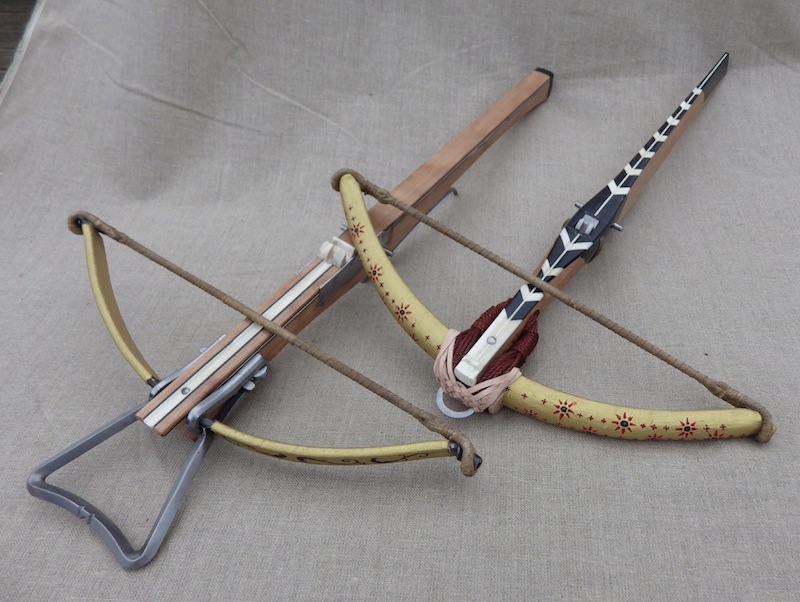I have been working with a BBC drama based in the early 16thC, that is being filmed at the moment and will be broadcast next year. I have been supplying archery equipment and teaching the actors to shoot and also supplied these two bows.
The first bow is based loosely on a bow belonging to Emperor Maximilian. and dated around 1480 I think. The original is a very notable bow because it has a bow length of around 600mm/24" and has a draw of over 150mm/6" which is unprecedentedly long to my knowledge. The original was spanned by a cranequin whilst my version uses a goats foot lever.
My reproduction has a cherry stock with horn and bone pinstripes and a bone deck. The nut is antler and the string linen. The bow itself is covered with linen and painted and is 350lb.
The second bow is styled after central European and German bows of the mid to late 15thC. It also uses a steel bow, but this one has been clad to make it look like a composite bow. This of course has an impact on performance and reduces bolt speed by around 10-15%, but as this bow is 350lb, there is still enough power left to count. The stock is cherry and the detailing is horn and bone and it has a steel nut. This bow is also spanned with a goats foot.
The bow is lashed in place with dyed hemp cords and has a plaited detail over this. I wanted to put pompoms on this bow but the TV people said no.
As the astute amongst you may have noticed both these bows are around 40-50 years out of date, but as they are being hired for a small budget I had to make bows that would be easily saleable afterward - commercial realities I am afraid.
I hope you like them.
They will be available for sale later in the year or early next year.
Tod

